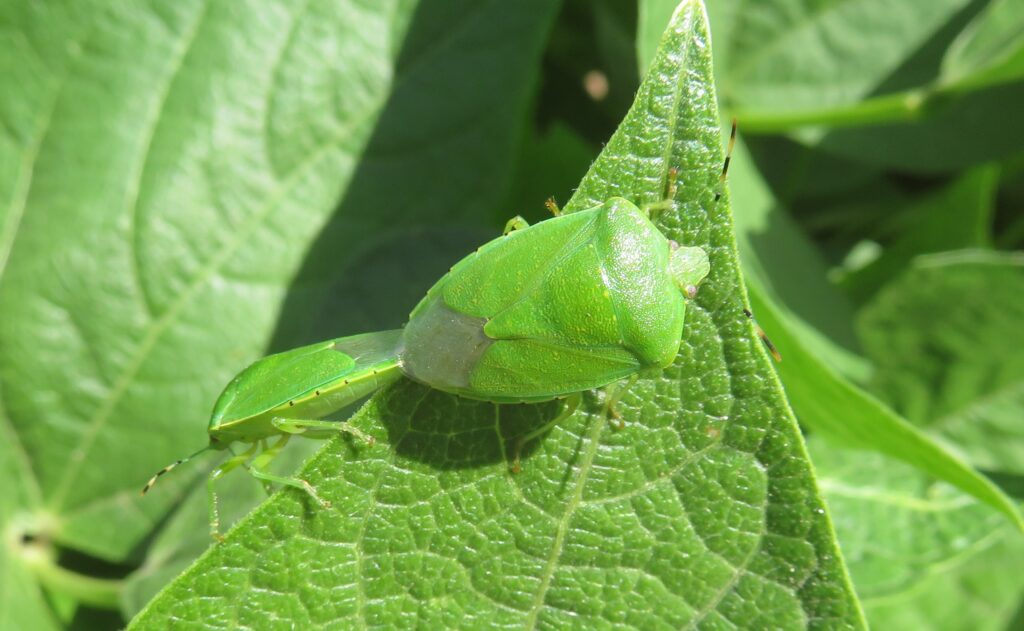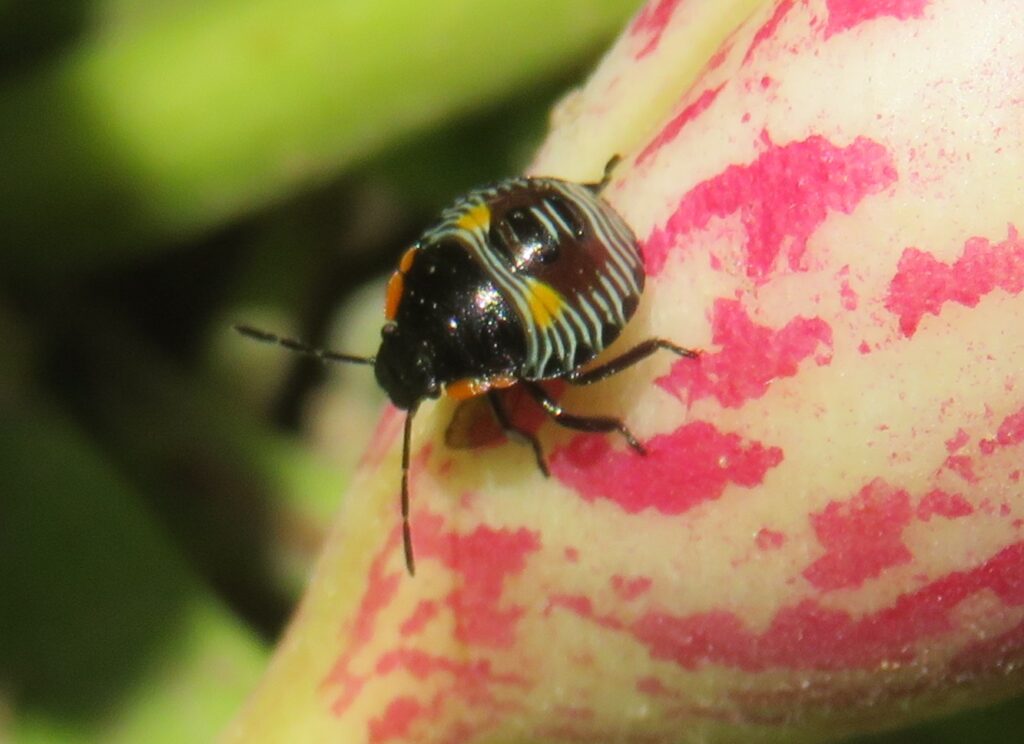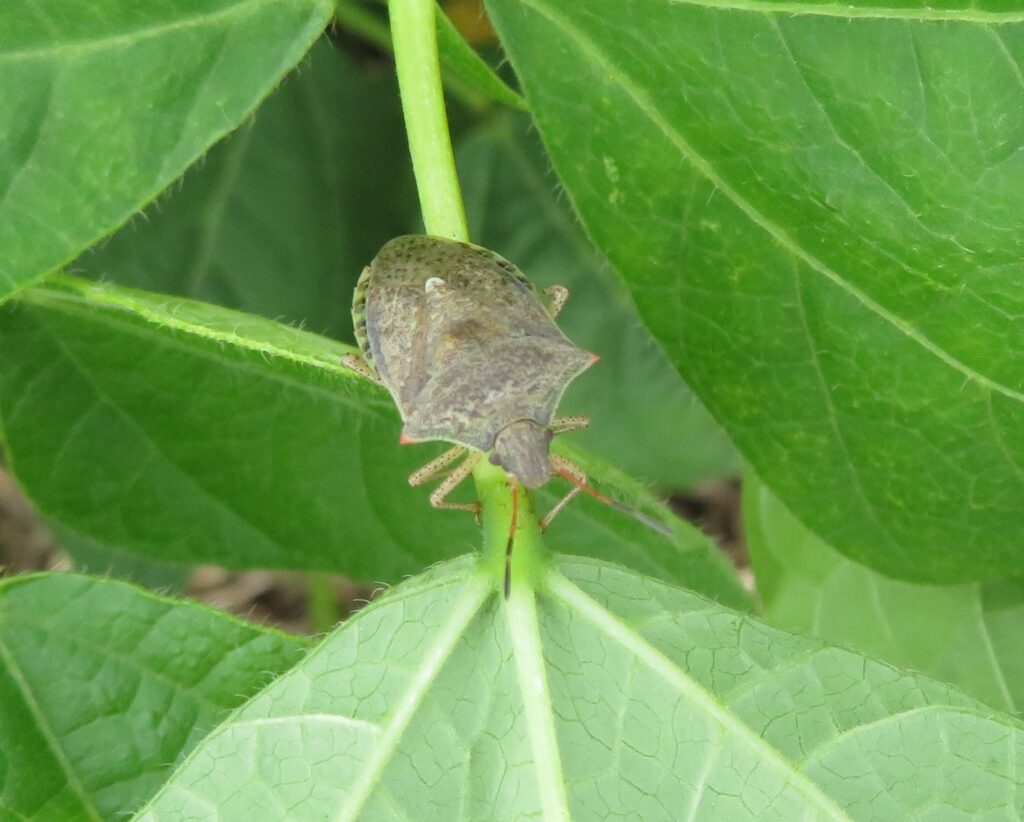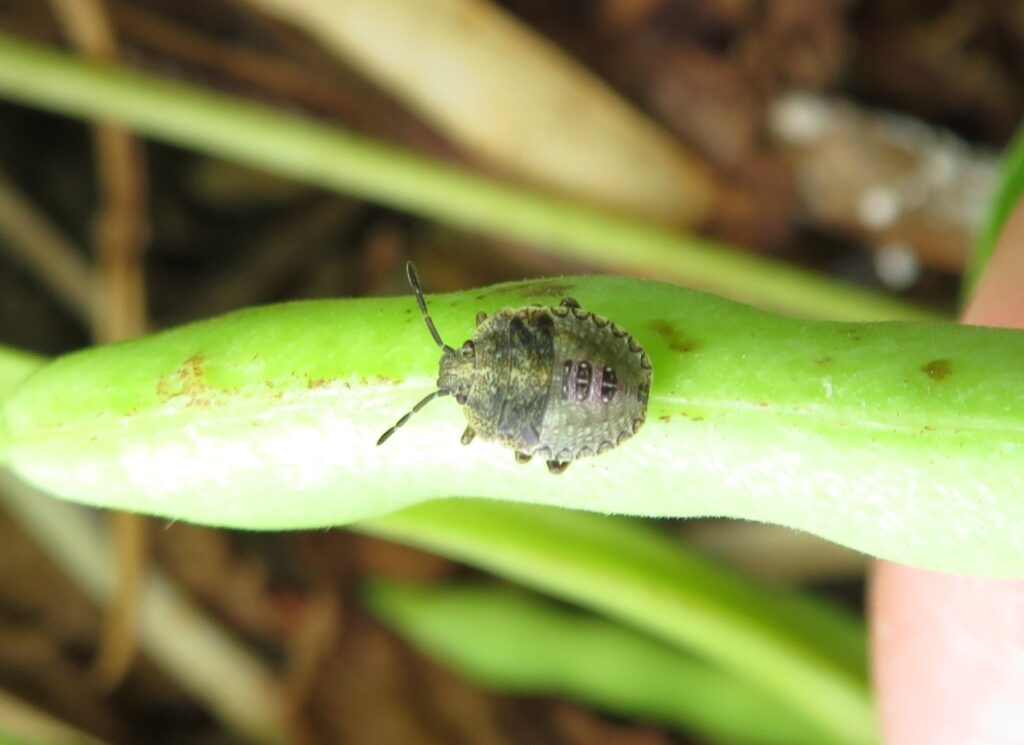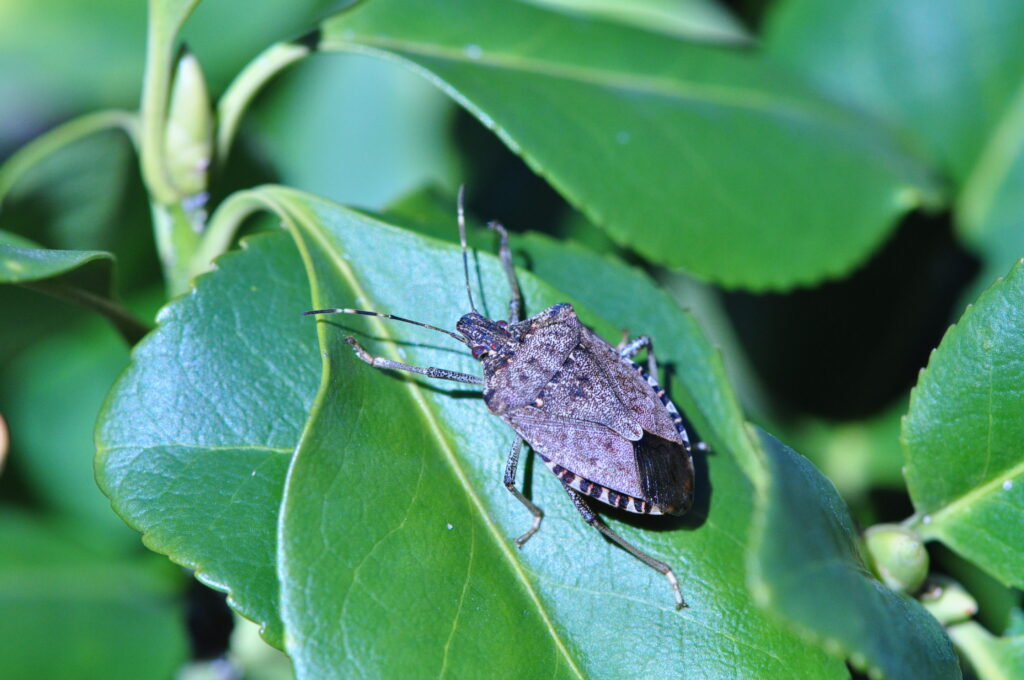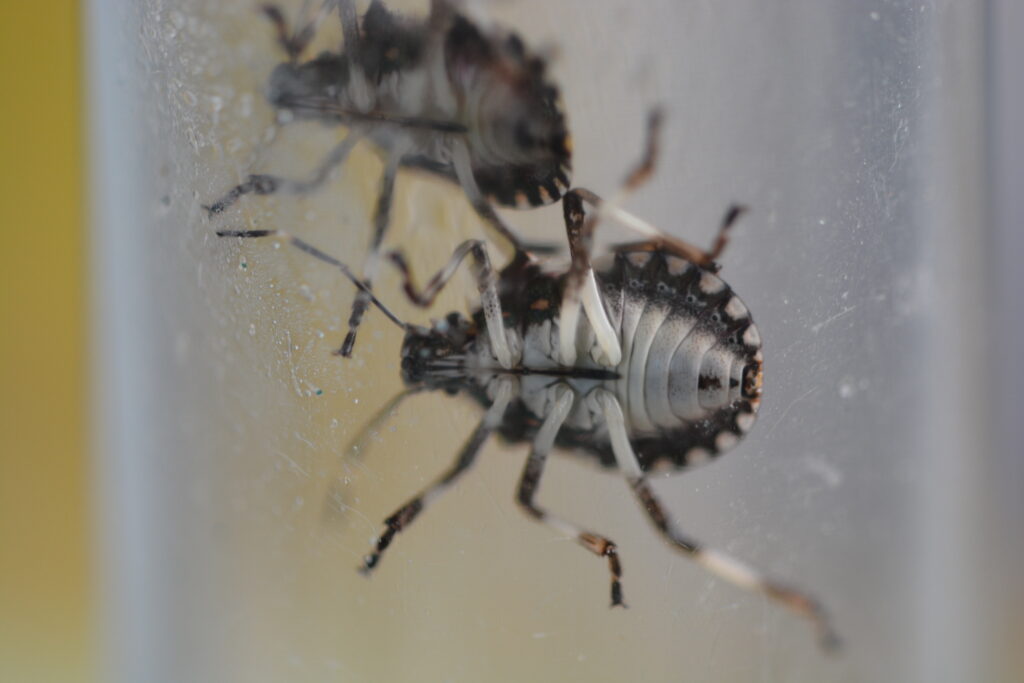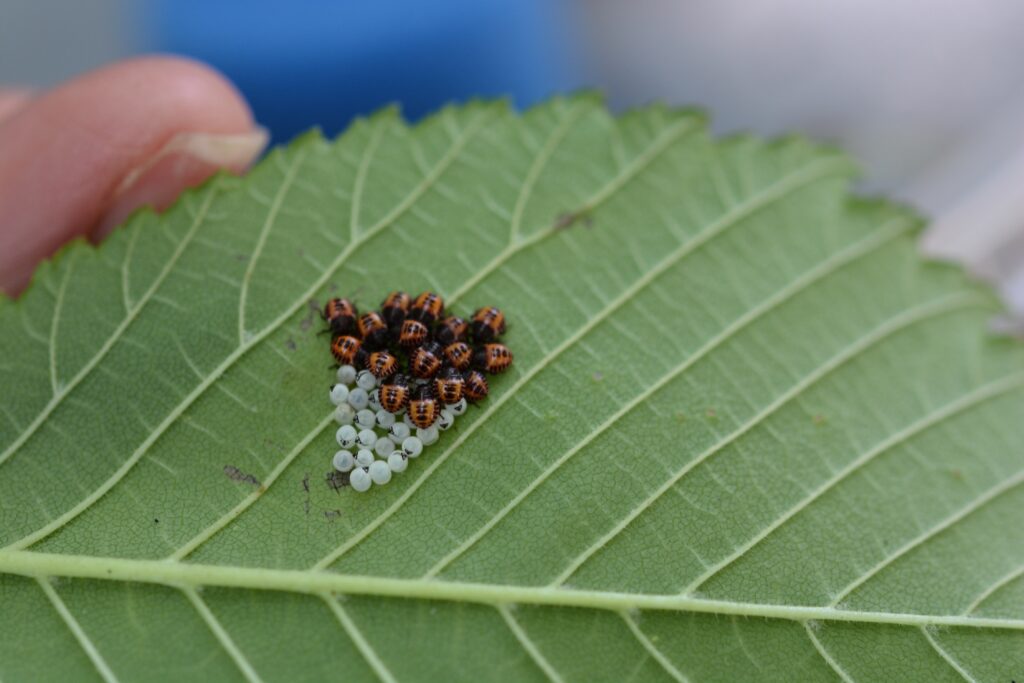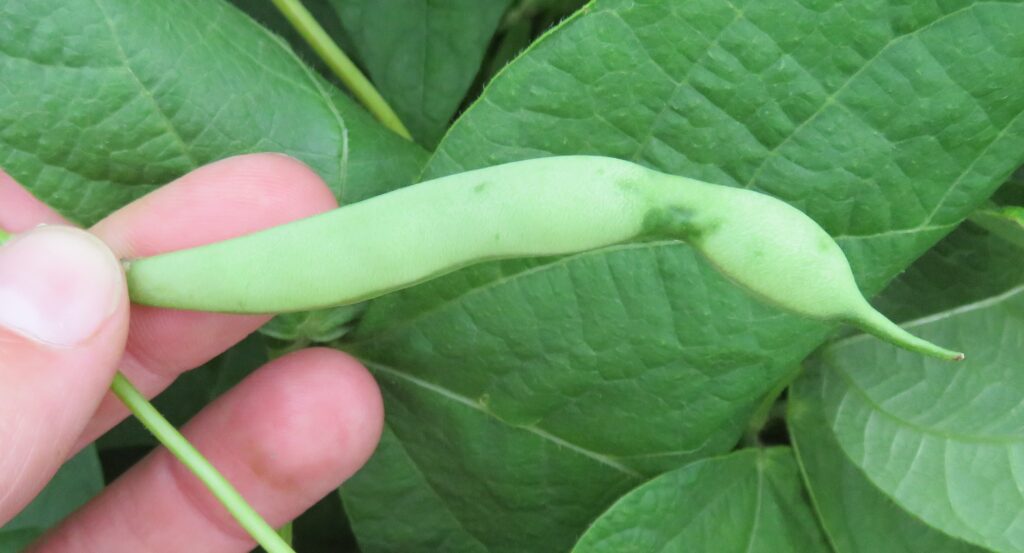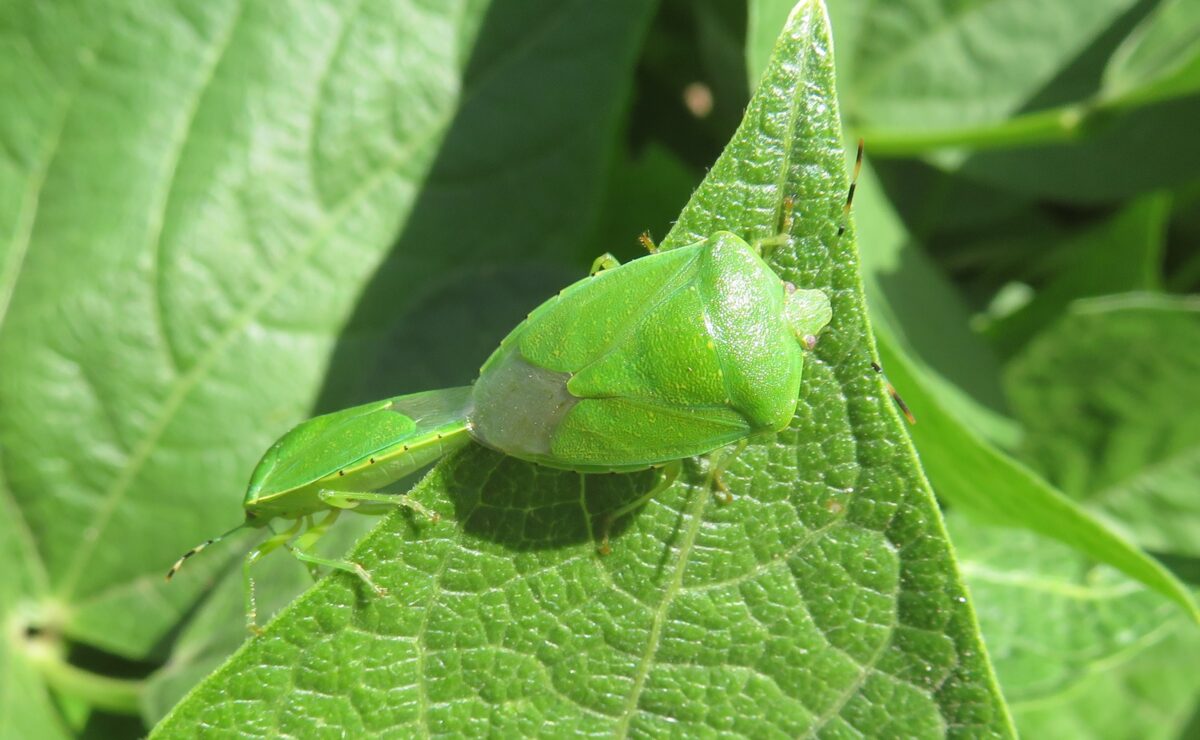Brown Stink Bug (Euschistus servus)
Green Stink Bug (Chinavia hilaris)
Brown Marmorated Stink Bug(Halyomorpha halys)
Description
Three types of stink bugs can injure beans: green stink bugs, brown stink bugs and brown marmorated stink bugs. Green stink bug adults are large — about 2 cm (0.75 in.) long — light-green, shield shaped bugs. Brown stink bugs are smaller than the green stink bug, approximately 1 cm (0.3 in.) in length, and are a mottled brown-grey in colour. Brown marmorated stink bug (BMSB) adults are almost as large as green stink bugs, ranging in 1.4–1.7 cm (0.6–0.7 in.) in length. They have a brown marbled pattern on their back and white with brown-grey colouration on their underside. The most distinguishing features of BMSB is the two white bands on each antenna and inward pointing white triangles alternating with dark triangles on their abdominal margins. BMSB is established in many urban and natural areas of Ontario although infestations have not been detected in Ontario crops (as of 2015).
Stink bug nymphs (juveniles) can look very different from the adult stage, in that they have very short, stubby wing pads, and are often a different colour than the adults. In particular, green stink bug nymphs have a flashy display of black, green, orange and yellow. Eggs are laid in tight, geometric configurations, and are yellowish white, turning dark over time, and barrel shaped. Some species have a crown of minute spines that form a halo around the top of each egg.
Life Cycle
All three species overwinter as adults in protected areas such as dead logs, hay bales or manmade structures. Overwintering adults will move to other host plants early in the season (e.g., brown stink bug on seedling corn and BMSB on buckthorn and other tree species). Eggs are typically laid on the underside of the leaves of host plants. Once hatched, the first generation of nymphs go through 5 instars before becoming adults. Both nymphs and adults will migrate to host crops that have reached mid-to-later reproductive stages where an ear or pod (fruiting body) is present. In late summer or early fall, the adults move to their overwinter sites.
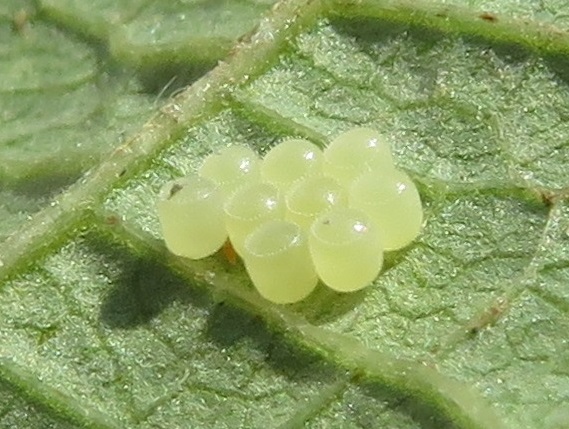
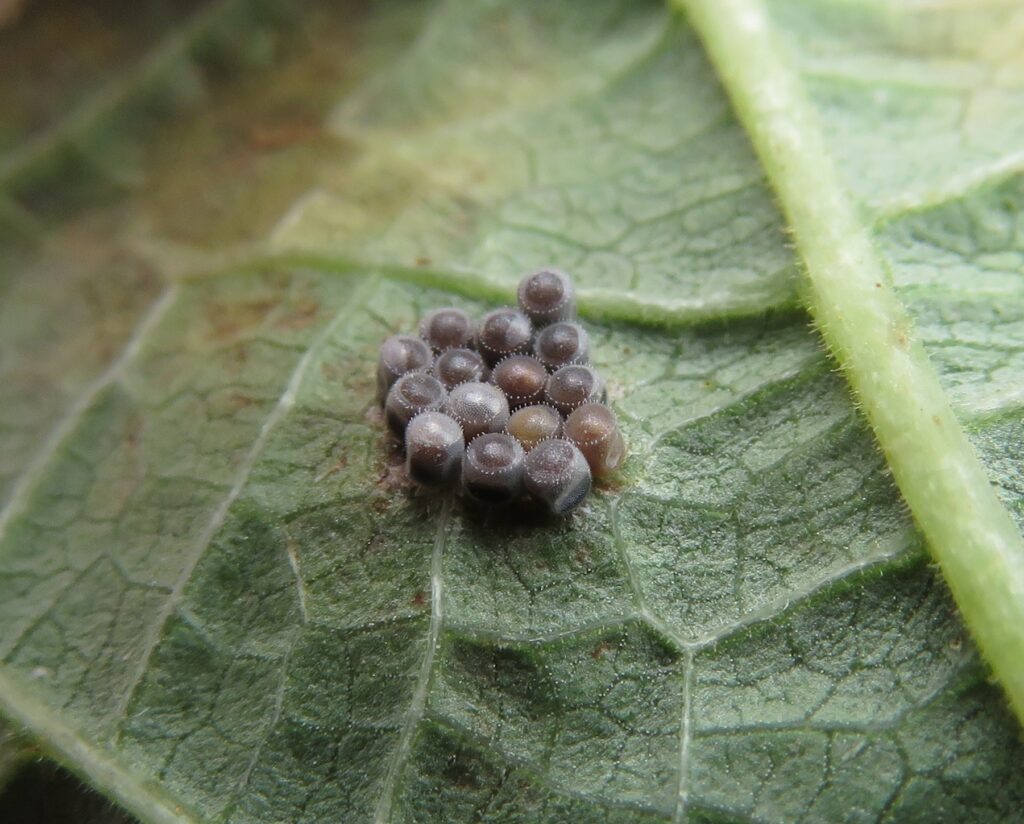
Damage
Both adults and nymphs have piercing and sucking mouthparts for removing plant fluids. Stink bugs feed directly on pods and seeds. They inject digestive enzymes into seeds, causing the seed to dimple or shrivel. The feeding wound provides an avenue for diseases to gain entry into the pod. Seed quality is reduced. Indirect effects can include delayed maturity — green bean syndrome — of injured plants, though stink bugs are not the only cause for green bean syndrome.
Conditions that Increase Risk
Early planted fields (typically soybeans) will be prone to early adult feeding as soon as pods begin to form. Later-planted fields may be attractive later in the season as pods will be young and preferred by migrating adults.
Scouting and Thresholds
At this time, insecticides are not labeled for stink bug control in Ontario dry beans. Scouting methods for stink bugs in soybeans are provided here for reference.
Begin scouting for stink bugs weekly from R2 until early R6 stage of soybeans. Use the drop-cloth technique in row plantings, and the sweep-net technique for narrow row and drilled beans. Scouting specifically for brown marmorated stink bug should be concentrated along the first 12 meters (40 ft) of the field’s edge, especially near wooded areas where tree hosts may reside. Brown and green stink bugs will be present throughout the field.
The drop-cloth method involves using a 90 cm (36 in.) long piece of white cloth, positioned on the ground between two rows of soybeans. Vigorously shake the plants over the cloth in each of the two rows. Count the number of adults and nymphs and divide the number by 6 to obtain the average number of stink bugs in a 30 cm (1 ft) row. Repeat this in at least four more areas of the field. Be careful not to disturb the plants prior to shaking them on the cloth. BMSB has a startle response where they will drop to the ground if they sense any disturbance.
For the sweep net technique, take 20 sweep samples (in a 180° arc sweep) in five areas of the field using a 38 cm (15 in.) diameter sweep net. Determine the average number of adults and nymphs per sweep by dividing the total count by 100.
For brown and green stink bugs, control may be warranted in crush soybeans if an average of 0.4 adults or nymphs per sweep is found, or two bugs per 30 cm (1 ft) of row during the R4 to early R6 stages of soybeans. Control may also be necessary for identity preserved (IP) food-grade and seed soybeans, if an average of one stink bug per 30 cm (1 ft) of row or 0.2 bugs per sweep is found. For brown marmorated stink bug, control may be warranted in crush soybeans if 0.2 adults or larger nymphs per sweep are found or 0.5 bugs per 30 cm (1 ft) of row during the R4 to early R6 stages of soybeans. For IP food grade and seed soybeans, control is likely warranted if 0.1 adults or larger nymphs per sweep are found.
Management Strategies
- At this time, insecticides are not labeled for stink bug control in Ontario dry beans. Management strategies for stink bugs in soybeans are provided here for reference. Apply foliar insecticide if thresholds are reached, but pay close attention to the product’s pre-harvest intervals. Applying control products at or before R5 is the best timing to avoid quality and yield losses. For BMSB spot treatments along the field’s edge, where infestations are concentrated, can provide effective control.
- Some natural enemies parasitize or feed on stink bug eggs.
- Use of trap crops has been somewhat successful, where strips of soybeans or other legumes are planted along the feld perimeter a few weeks earlier than the rest of the feld. Stink bugs will be attracted to the trap crop frst and a foliar application can be applied to the trap crop to reduce the risk of the adults moving into the rest of the feld.
*INVASIVE SPECIES ALERT* Brown marmorated stink bug (BMSB) is a new invasive stink bug species, that is a major pest of corn and soybeans in the U.S., has been found overwintering in Ontario but has not yet been found in fields and can be easily confused with other stink bugs, including brown stink bug. If you think you have found BMSB, please contact OMAFRA’s Agricultural Information Contact Centre at 1-877-424-1300 or ag.info.omafra@ontario.ca. Up to date information on identification, potential impact and management strategies is also available at ontario.ca/stinkbug.
The brown stink bug adult should not be confused with the spined soldier bug, which is a beneficial insect that feeds on caterpillars and other insect pests. To tell them apart, look at their feeding beak or needle-like mouthpart. The beak of the brown stink bug is slender to pierce through delicate plant tissue. The beak of the spined soldier bug is thicker so it can harpoon into its insect prey. The soldier bug adult also has more pointed (“spined”) shoulders than the brown stink bug, though this may be hard to notice unless you have them side by side to compare.
